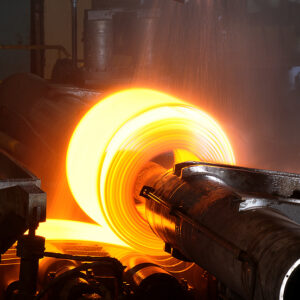My family has been in the structural steel fabrication industry for three generations. During that time, we saw the implementation of the North American Free Trade Agreement (NAFTA) and have suffered the consequences of the concept of ‘free trade’ with increasing intensity ever since.
While I support the concept of free trade as we are truly a global economy, I have experienced firsthand that the concept and application of free trade are miles apart. For free trade to be fair and free trade, there must be parity of the multiple factors that dictate the cost of goods sold. Without parity, there is an imbalance in the cost structure which in turn leads to an imbalance in trade. That is where the United States’ structural steel industry finds itself today.
For decades, the structural steel industry has endured foreign countries’ programs and interventions that shifted the balance of trade in their direction. The structural steel industry, especially here in the Northeast, has been systematically targeted by Canada.
Canada has built a structural steel fabrication industry that has outwardly targeted the steel-intensive construction markets of the Northeast. Canadian fabricators buy cheap steel from foreign countries that aim to undermine our domestic mills. Canada does not manufacture raw structural steel beams. It needs to either purchase from our domestic mills or from foreign mills, such as China. China’s overproduction of raw steel has caused a distortion in the pricing of steel worldwide. Add to the cheap raw material, Canada’s federal and provincial rebates of “Value-Added Taxes” for exported fabricated structural steel, and other export subsidies along with their devalued dollar, allows Canadian steel fabricators to aggressively target U.S. markets. All the while, the Canadian government protects its markets with Buy Canadian policies.
President Trump, in his first administration, acted to protect our structural steel industry from China’s global overproduction by instituting the Executive Order (EO) Section 232 that placed tariffs on imports of foreign raw steel. President Trump’s tariffs were instituted to ensure the viability of our structural steel industry as it is vital to our national security.
At the time of implementation of Section 232, the capacity utilization of the domestic steel mills was below 80 percent, putting them at risk. The health and strength of our domestic mills is vital to our nation’s ability to produce enough steel to meet our needs for defense manufacturing (such as ships and military bases), critical infrastructure (such as government buildings and water treatment plants) and telecommunications. However, since the initiation of Section 232, the intent of the EO has been undermined with multiple exemptions and quota systems.
President Trump’s new EO regarding steel and aluminum tariffs are intended to again protect our national security by doing away with the Section 232 exemptions and quotas. I applaud President Trump for his continued appreciation of the need to strengthen the protection of our structural steel industry to ensure our national security interests are met.





